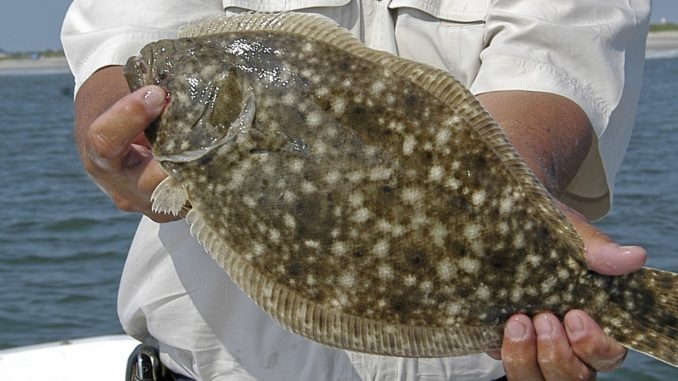
Peer-review board rejects report for problems, delaying implementation of steps to improve fishery
Southern flounder, according to the N.C. Division of Marine Fisheries, have been in trouble for more than 10 years, and a potential big step toward ending overfishing and overharvest of the species has turned into a big stumble.
A stock-assessment report scheduled to go to the N.C. Marine Fisheries Commission in mid-February that judged southern flounder as still being overfished and overharvested has been rejected by a peer-review board of three scientists who noted problems with the report and would not approve it, according to Dr. Louis Daniel, NCDMF’s executive director.
Had the stock-assessment report been approved, the agency’s 2005 Southern Flounder Fisheries Management Plan would have mandated drastic action to end overfishing and overharvest, up to and including closing the fishery. The peer-review board’s decision is seen in many corners as a big victory for commercial fishermen, who could have faced a mandatory curtailing or shutdown of one of their most-important fisheries.
According to Daniel, the peer-review team – Dr. Steve Midway of Coastal Carolina University, Erik Williams of the National Marine Fisheries Service in Beaufort and Genny Nesslage of the Atlantic States Marine Fisheries Commission – decided that it had a major flaw.
Daniel said the stock assessment has two problems, “one potentially surmountable, the other insurmountable.” The first was that more observations were needed of young-adult southern flounder numbers, which can be corrected with more sampling. The second is that a different study of southern flounder has shown “mixing” of North Carolina’s fish with flounder from Georgia, South Carolina and Florida after they leave inshore waters and head to the ocean to spawn during the winter. That, Daniel said, makes knowing exactly how many southern flounder live in North Carolina waters impossible, and thus, they can’t be managed with a traditional stock assessment.
Daniel compared the situation to a football field with the goal lines removed.
“We’ve been trying to model a North Carolina population that’s having mortality in South Carolina, Georgia and Florida,” Daniel said. “They said individual state assessments are not good for managing (such) a species. This is the insurmountable problem we have if we’re modeling (our flounder) as a closed population.”
Daniel said the NCDMF ran into a similar stock-assessment problem several years ago with sea mullet, aka kingfish or whiting. Because three kingfish species live in North Carolina waters but also migrate as far south as Florida, peer reviewers couldn’t certify a study’s results as accurate for a closed system.
However, Daniel insisted his agency would not sit on its hands.
“We know we’ve got a problem,” Daniel said. “Immature fish are being caught. It’s not the case that we’ll throw up our hands and say we won’t do anything on southern flounder for another five years.”
Daniel said at the NCMFC’s Feb. 18-20 meeting in Wilmington, NCDMF will present ideas to the Commission about reducing flounder mortality, even without a certified stock assessment.
“The only way to improve spawning success and likelihood of better recruitment, and (expansion) is to not catch as many fish,” Daniel said. “The only way to move forward is a reduction in harvest. It’ll be up to (the Commission) to look at options, add what they want, and we’ll look at that and see what happens. Then we will run them out to public comments this summer.”
Daniel said the “vast majority” of flounder move out of North Carolina’s sounds in October and November and that “something will have to reduce large-mesh gill nets.”
However, critics of NCDMF have pointed to the agency’s past handling of southern flounder, especially with regards to commercial fishing. For example, in 2013, the stock-status report showed that netters landed more than 2.1 million pounds of southern flounder, while recreational anglers landed only 409,086 pounds. That commercial catch – 84.2 percent of all landings – doubled between 2011 and 2013.




Be the first to comment